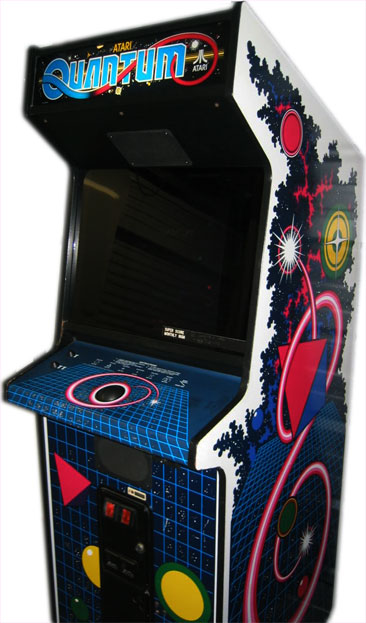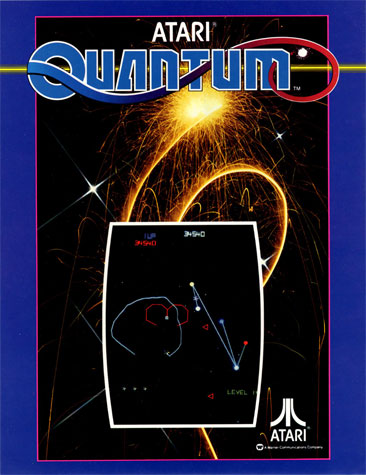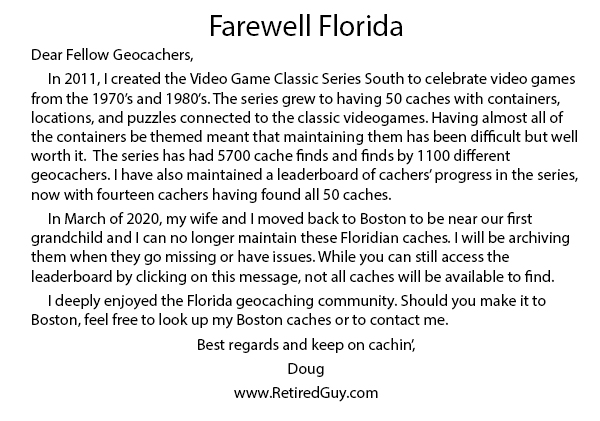Quantum - Video Game Classic Series South Mystery Cache
RetiredGuy: Sorry but it is time to archive this one.
Quantum - Video Game Classic Series South
-
Difficulty:
-

-
Terrain:
-

Size:  (small)
(small)
Please note Use of geocaching.com services is subject to the terms and conditions
in our disclaimer.
I originally planned to hide this at a perfect location near the Cobalt Restaurant at the Vero Beach Hotel & Spa but Happy Hunter beat me to the location and posted Halloween Hoax (GC2GYCJ). Oh well, back to the drawing board. The cache is not at the posted coordinates but is within one mile.

Quantum was a color vector arcade game brought out by Atari Inc. in 1982, during the “silver age” of arcades. It is not known whether this moniker came from pinball’s silver balls (made famous in the Who’s Pinball Wizard) or just recognition of all the quarters being dropped into the machines then. Yes, you young kids probably have read of games from this era in your history books under carbon dating.
Quantum was developed by General Computer of Cambridge, Massachusetts under the code name Mercury Molecular Magic. It was designed by Betty Tylko, Art Ng, and Doug Macrae.
The premise of the game was related loosely to quantum physics in that the player directed a probe with a trackball to completely circle atomic particles of manganese crystals for points, without touching various other particles. Once the particles were surrounded by the probe's tail they were destroyed.

The Particles:
• Electrons: 20 points - Rotated slowly around the nucleus.
• Nuclei: 300 points - Moved slowly around, bouncing off walls. Would clip the probe's tail if it crossed it. Capturing all the nuclei on the screen advanced play to the next level.
• Photons: 200 points - Entered from one edge of the screen, span across the screen, and disappeared off the other side.
• Pulsar: 400 points - Travelled towards the probe, pulsing its "arms" in and out as it moved.
• Positrons: 200 points - Formed by stray electrons left when a nucleus exploded. Moved from its point of origin to the edge of the screen very quickly.
• Splitters: 100 points - Travelled in a random pattern across the screen, flashed colors and split into 3 after a few seconds, each of these 3 splitting again after a few more seconds.
• Triphons: 100 points - Moved around the screen randomly.
The game was one of the very first to use the 68000 microprocessor and one of the very few to use a color vector monitor. An interesting piece of trivia was how players learned to get to play free games on Quantum. When a post-1964 quarter (91.67% copper) was dipped in or sprayed with liquid nitrogen and then dropped in the coin slot, a credit would be registered but the quarter would fall through the coin mechanism and come out the coin return slot. Engineers never figured out how this worked but eventually a new, mainly plastic coin mechanism replaced the old and the problem (feature?) was resolved.
Today Quantum is highly sought after and is considered one of the holy grails of classic arcade coin-op collecting.

You can validate your puzzle solution with certitude.

Additional Hints
(Decrypt)
Ryrzragny, zl qrne Jngfba!